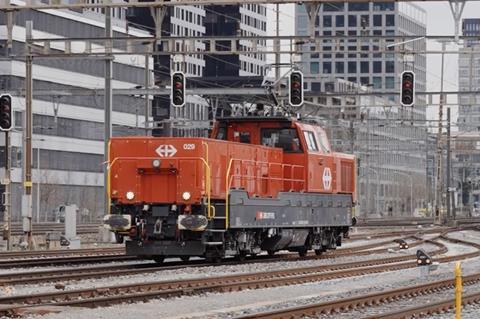
SWITZERLAND: SBB and Alstom have carried out a series of trials using a remotely controlled shunting locomotive on tracks that remained open for normal operations.
As part of the research trials, 24 locomotive drivers operated a shunter in the marshalling yard at Zürich-Mülligen from a control centre at Zürich Oerlikon. According to SBB, this was one of the first ATO tests in Europe to be carried out during ongoing operations in a marshalling yard, rather than using tracks closed to other rail traffic.
The locomotive was ran up to a maximum speed of 30 km/h. Two SBB staff members were on the loco during the test run, ready to intervene should manual control be required.
The locomotive’s control system was developed by Alstom as part of work being undertaken for the Innovation Pillar within the Europe’s Rail research programme. The project has been co-funded by the Swiss Federal Office of Transport and SERI, the Swiss State Secretariat for Education, Research & Innovation.

SBB says the use of ATO could offer it greater flexibility in specific use cases, for example in controlled environments such as marshalling yards, engineering worksites or freight terminals. It is also considering more ambitious applications, such as using ATO to bring trains from sidings to a departure platform, where the driver and other traincrew would board.
‘Automatic Train Operation and remote controlled locomotives could be used in the future, for example, for short movements on construction sites. On the other hand, self-driving trains with passengers are not a priority’, an SBB spokesperson said at the conclusion of the tests, which were undertaken in February and early March.
‘From 24 of our colleagues we received very different feedback, which is very valuable to us for the further development of the technology’, added SBB Project Manager Beat Rappo.

















